George Raft
The Quintessential
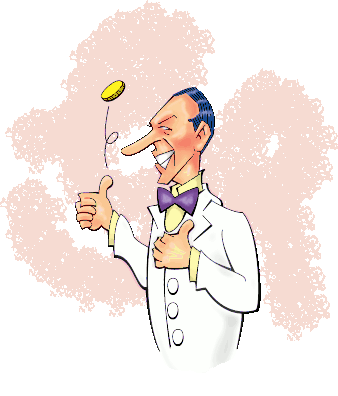
George Raft
Who copied who?
James Cagney, Edward G. Robinson, and George Raft. These three gentlemen achieved their greatest fame for portraying America's most admired citizens of all times.
We mean gangsters, of course.
True, other actors have played gangsters. But there are few thespians today who specialize in the roles.
But of course James, Edward, and George all had other talents. Jimmy was quite the expert hoofer, and he could play characters as diverse as George M. Cohan, an American Coca-Cola executive living in Berlin, and Bottom the Weaver in Shakespeare's A Midsummer Night's Dream. Edward was also quite versatile, playing everyone from Nobel Prize winners to monks.
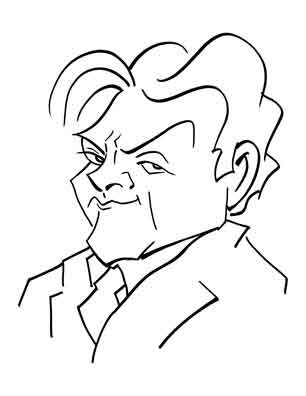
Jimmy Cagney
He had other talents.
And George didn't play just gangsters, either. Although most people don't remember it, he was the first performer who (with Carole Lombard) danced on film to Bolero, the famous orchestral work by Maurice Ravel. The film was commonsensically named Bolero and came out in 1934 during Maruice's lifetime. More people, though, may remember the song from the movie 10 where Bo Derek also - ah - "danced" to the same tune.
In the film, the music had to be greatly edited and among the passages omitted was one of the most feared solos in the orchestral repertoire. In fact, part of the fun for the cognoscenti is listening to a live performance to see if the trombonist will flub his part. We won't mention specific orchestras but there have been performances even from the Big Five where the principal trombonist blooped some of the notes.
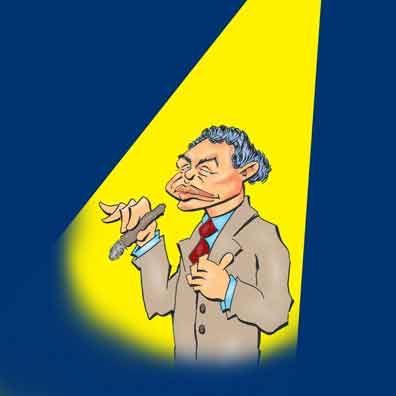
Edward G. Robinson
From Nobel Prize Winners to Monks
Although George could dance to Bolero, we also repeat that it was as the quintessential gangster actor that George towered above all other gangster actors. And yet, he certainly wasn't the best of the actors.
Ha? (To quote Shakespeare). How can you say the lesser of the actors was the best. We'd really like to know how you can make such an absurdist statement.
I thought you would as Captain Mephisto said to Sidney Brand. It's very simple really.
But first a bit about George.
George Ranft - yes, that's Ranft - was born in New York City in 1895, 1896, 1898, 1900, 1901, or 1903 depending on who's telling the story (George himself changed the date at times). One writer, though, citing the 1910 Census and the World War I draft board documents, says September 26, 1901 is likely the real date.
George grew up in Hell's Kitchen, a rough neighborhood which lies a bit west and south of Central Park. Although the neighborhood was traditionally Irish, the name Ranft is German.
The size of George's family is as disputed as much as his birth date. Some sources say there were as many as ten kids in the household. But historians who have searched census records find there was only George and an older sister.
Regardless of the size of the family, evidence is that young George didn't get along too well with his dad. He left home as a teenager but still hung around New York City. He shortened his name by one letter and tried his hand at both semi-professional baseball and boxing. He wasn't that great at either. So he tried dancing.
How, you ask, did a tough street kid become a professional dancer? Well, at the time dancing was something everyone did. This was, after all, the time of the "dance halls". These were establishments where you paid a fee and went in to dance and perhaps find - ah - "other things" to do. Dance halls were not just for nighttime excursions but were full time businesses where young people would go to hang out day or night. George became so good that he - and an acquaintance named Rudolph Valentino - were actually paid by the halls to dance with the lady customers.
By necessity the music was live music and at one of the halls George met a piano player named Jimmy Durante. Jimmy later started his own club and hired George specifically as a dancer. But George really began to move up in the world when he was employed by famed night club owner Texas Guinan (pronounced GUY-nun). Although Texas greeted the customers with her trademark "Hello, suckers!", the club was one of the most popular in New York and was patronized by the rich and the famous.
And when we say George could dance, we mean it. In 1925 he landed a job in a Broadway musical The City Chap and the next year he was part of a troupe that toured Europe.
In 1929, Texas was slated to star in a movie, Queen of the Nightclubs, and she recommended George as one of the cast. The movie was filmed on the West Coast, but once the stock market crashed George relocated permanently to Hollywood. There he took small roles in motion pictures. Then in 1931 he landed a part in the movie, Quick Millions starring Spencer Tracy. George played a gangster.
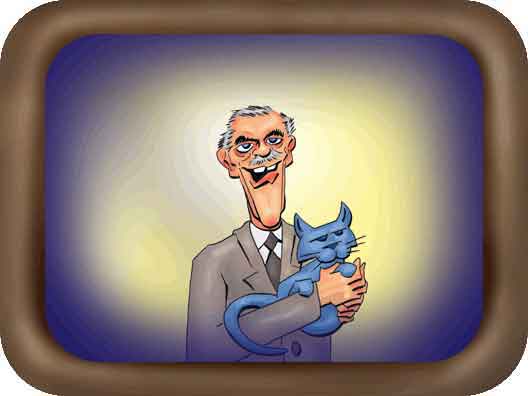
Boris Karloff
An Up and Coming Actor
It was the following year, 1932, that made George. He was in ten motion pictures and rose from appearing as an uncredited dancer to getting top billing.
The third movie in George's annus mirabilis was also a gangster film, Scarface. Scarface featured Paul Muni in the title role, and the plot was obviously and yet loosely based on the criminal career of Al Capone. George had only a supporting part and his name didn't even appear on the movie posters (although the name of another up and coming actor, Boris Karloff, did). But George's performance was distinctive, and it was in Scarface that he began his trademark habit of flipping a coin.
In his next film, Night World, he wasn't listed on the poster either, and in the subsequent picture, Love is a Racket, his scenes ended up on the cutting-room floor. In Madame Racketeer, George's role was a bit meatier but he was far from being a star.
But then in the next production Night After Night George got top billing. Or at least his name was at the top of the cast. Night After Night is also notable for having the first film appearance of Mae West where she had the famous exchange:
| Hat Check Girl: | Goodness! What lovely diamonds! |
| Mae: | Goodness has nothing to do with it, dearie. |
In the following seven years, George made over 20 motion pictures. By the end of the decade he was commanding $5000 a week.
George is usually credited saying that he made ten million dollars but "part of the loot went for gambling, part for horses, and part for women. The rest I spent foolishly."
Like most famous bon mots, it's disputed if the quote was original or even if George said it. An alternative version sounds a bit less contrived. "I was a soft touch," George said. "If anybody asked me for money, I figured they needed it. I suppose I'd be a millionaire today if I hadn't spent so much on broads." The truth is that George found lots of other ways to spend his money.
George invested in hotels, night clubs, race tracks and sporting events, particularly boxing. He also invested money in gambling establishments, including the off-shore casino ships that were popular in California until Governor Earl Warren shut them down.
In the locales and the times, such businesses were favorite fronts for the mob, and George's activities brought him to the attention of the FBI. He was interviewed from time to time, and the agents found him "outwardly" cooperative. All-in-all, though, the tone of George's rather voluminous FBI file wasn't very positive.
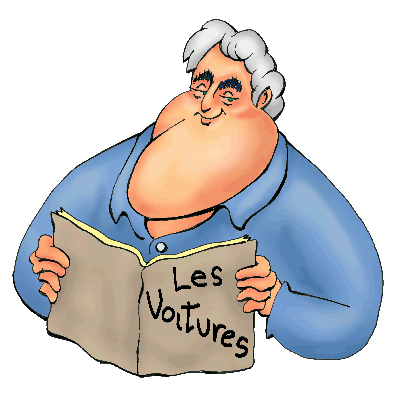
Jay Leno
He had some stories.
It was certainly no secret that George was buddy-buddy with real life mobsters. Of course, in his day you couldn't work in a nightclub that didn't have some connection to the mob. Even into the 1980's, nightclub performers had to deal with mobsters who did not always have the most stable personalities. Jay Leno told some tales of the strangeness that went along with working in the mob-controlled clubs and Richard Pryor even worked his experiences into his routine.
Two of George's best friends were Owen Madden, a prominent New York mobster, and Benjamin "Bugsy" Siegel, who in the late 1930's relocated to Los Angeles. George knew both men from his New York days, and although today almost no one remembers Owen, everyone knows about Bugsy.
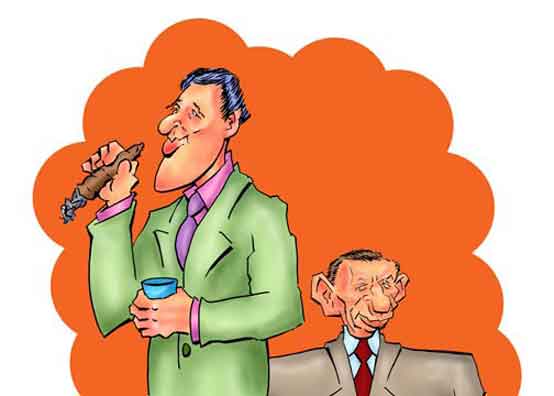
Bugsy Siegel and Meyer Lansky
They were his friends.
George - and almost any of Bugsy's friends who had money - were involved in helping Bugsy build - or at least complete - the Flamingo Hotel. In 1945, Bugsy took over the project from Hollywood publisher, businessman, and habitual gambler, Billy Wilkerson.
But Bugsy had been such an inept businessman that the expected $1,000,000 cost quickly ballooned up to $6,000,000. So Bugsy began to scrounge from anyone he could. George himself put up $100,000, a considerable sum in the 1940's.
Despite having to deal with Bugsy's fractious temper, George remained friendly with Ben (as George or anyone else with a desire to stay healthy called him). So when the Flamingo opened, Ben asked George to show up for the gala celebration on December 26, 1946. Unfortunately, William Randolph Hearst - the publishing mogul who also had considerable influence in Hollywood - had sent word that any movie stars who went to the opening might never work again. This certainly kept a number of the stars away and may have contributed to the fiasco that the opening was. Ben, though, "persuaded" George to show up.
What George was doing on June 20, 1947 is a matter of some dispute. According to one story Ben had invited George to dinner at the fancy Ocean Park Restaurant in Los Angeles, and then later they would repair to the rented home of Ben's girlfriend, Virginia Hill. But George had a previous engagement.
According to one account, George had already gone to bed and was on the verge of slumber when around midnight the telephone rang. He fumbled for the phone.
"George Raft?" a crisp voice asked.
"Yes," George replied.
After identifying himself as a member of the district attorney's office, the speaker asked him to come downtown.
"We need to talk to you about Bugsy Siegel," he said.
"You mean Ben Siegel," George snapped.
"Bugsy or Ben, it's all the same to us," the man said.
George said that if they wanted to talk to him, they could come to his house. When the police got there they told George that Ben - or Bugsy - had been gunned down while sitting on the sofa in the house where George had been invited.
Another story, though, is that once George completed his business, he was playing bridge when an actor named Dewey Robinson had come in and told everyone that Ben had been killed. Naturally the control of the Flamingo passed on to Ben's other partners.
The usual story is that five minutes after Ben was killed a couple of "boys" came in and announced that they were taking over. Hm. Most suspicious.
Of course, the time between Ben's demise and the boys showing up has never been pinned down and the accounts vary from the oft-told five minutes to an hour. We know Allen Smiley, a friend of Ben's, was with him at the time and that Allen called a friend even before he called the cops (which he did within 15 minutes of Ben being killed). So Ben's friends were getting the word that Ben was killed almost as soon as Ben hit the floor (or rather fell back on the couch).
The story that two thugs walked into the Flamingo and told Virginia Hill they were taking over is bullshine, horse hockey, and poppycock. Mostly because Virginia wasn't in the Flamingo at the time. In fact, she wasn't even in the country. She had flown - with suspicious timing according to some - to Paris in time to be in Paris when Ben was killed.
Of course the casino employees were shocked that Ben had been killed. But once it happened it made perfect sense that someone would come in and tell them. Whether they said they were in charge is a moot point. After all, they were in charge.
Some researchers have stated George was never repaid his 100 grand. Ten years later, though, he tried to obtain part interest in the Flamingo which would have more than reimbursed the debt. But because of George's "association" with gangsters, the Nevada Gaming Board denied his request.
You'll read that to prepare for the gangster roles, George had studied the real life mobsters, particularly Ben, and copied his fancy duds and perfectly coiffured hair (Ben even wore a bathing cap when he went swimming). But one historian who studied both the men and the era said it was the other way around. It was Ben and his friends who looked to George as a model for the most modern major mobster.
By 1945, George had appeared in over 60 movies. But after World War II, the popularity of gangster themes had begun to wane. So George found roles harder and harder to come by. He also wasn't getting any younger and once more had to start settling for supporting roles. Increasingly dissatisfied with waiting for some producer to call, George eventually set up his own production company. The venture was not successful and went out of business. And by the mid-1950's George's continuing lavish lifestyle was playing havoc with his finances.
Then the manager of the Capri Casino in Havana offered George a job as casino host. The host or "greeter" was almost always some celebrity and was usually given a stake in the casino as well.
Although you'll read that casinos will pay movie stars thousands of dollars just to show up, the celebrity host has pretty much vanished from Vegas. True, you will see jobs for "greeters" at casinos but these are regular staff who meet the visitors and help them find their way around. The greeter lets everyone know what games and services are available, and what events are planned and when.
Today with casinos in almost every state in the Union, it's easy to forget that for most of the 20th century if you wanted to make a legal bet (horse racing excepted) you had to go to Nevada. That was a long haul for a lot of Easterners. But from Miami they could make it to Havana in under two hours. So soon Havana became a second mecca for gamblers, not to mention for the various entrepreneurs who perhaps because of a whiff of a shady past had trouble getting gaming licenses in Vegas.
But Cuban President Fulgencio Batista was not concerned with a person's past, only his present - his present income, that is. Fulgencio was always willing to accept - well - "expeditionary fees" from the businessmen who wanted to build a new hotel cum casino in Cuba's capital.
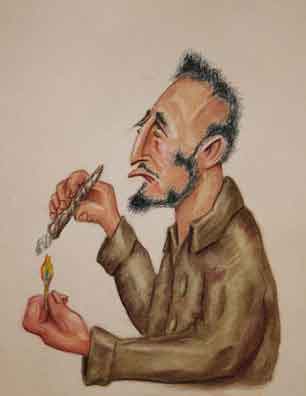
Fidel
It was too much.
Unfortunately (for George) on January 1, 1959, Fulgencio loaded himself and his family onto a plane and fled Cuba. A week later, Fidel Castro and his barbudos rolled into Havana. Although some casinos continued to operate for a while, their connection to the United States - not to mention their unsavory association with American mobsters - was too much for Fidel and his buddies. Soon all casinos were shut down.
OK. Since George's heyday we've had plenty of actors playing mobsters: Marlon Brando, James Remar, Frank Vincent, Rod Steiger, Billy Drago, Anthony LaPaglia, Chazz Palminteri, James Caan, James Gandolfini, Joe Mantegna, Bob Hoskins, Ben Kingsley, Vincent Pastore, Al Pacino, Albert Finney, Tony Sirico, Abe Vigoda, Andy Garcia, Steven Van Zandt, Jack Nicholson, Charles Bronson, Joe Pesci, Michael Imperioli, John Travolta, and Robert De Niro. So how can we say that George was the #1 gangster actor of all time?
Well, what makes George unique is that for all the actors who've played gangsters, George was the one actor who played gangsters and also had someone else play George playing gangsters. This was in The George Raft Story. Ray Danton played George.
And yes, Ray did some pretty fancy dancing.
If you see the movie, you'll think that George had pretty much quit acting before he landed the casino job in Havana, that he didn't start making movies again until 1961 when he appeared in Some Like It Hot with Jack Lemon, Tony Curtis, and Marilyn Monroe, and that he then lived happily ever after.
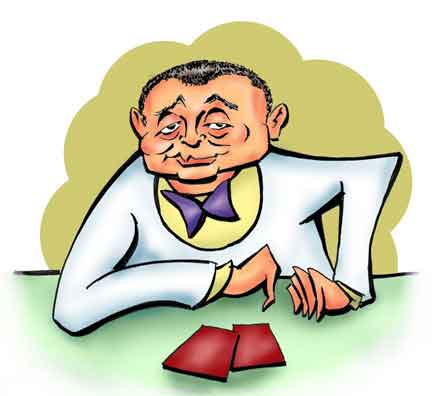
Peter Lorre
George was in his last film.
Actually from 1950 to 1980 George was in 35 movies or television shows. True, many of his appearances were cameos where he would play himself or perform in some self-satirizing role. George even had a brief part in the 1967 version of Casino Royale which has to be one of the worst movies ever printed to celluloid (and it gets worse with each viewing). George also appeared in Jerry Lewis's film, The Patsy which was the last film to feature Peter Lorre.
Having the occasional movie part was fine, but George needed a more regular source of income. Fortunately, after the Havana casinos shut down, George went to work at London's Colony Sports Club. Gambling in private clubs was legal in England and so everything was on the up and up.
Well, wasn't it?
It's not easy from contemporary accounts to establish exactly what George's association with the Colony Sports Club was. Some articles say he "owned" the club (he didn't) or that he "fronted" the club (whatever that means). For his part, George said he was an employee. He was paid a mere $200 a week and given a couple of points in the club. His typical day, he said, was going to the club, then eating dinner, and finally going back to his apartment. He was living, he said, like a hermit. But even this restrained lifestyle didn't last.
What had prompted George's move to the Albion Isle was that in 1961 England had liberalized its gambling laws. But the law, the Betting and Gaming Act, was poorly worded and made it possible for almost anyone to open a casino. This produced a boom of over 1000 operating casinos. Naturally this brought in an influx of US mobsters to serve as casino "advisors". Among the "advisors" of the Colony Sports Club were (reputedly) the mob financial whiz Meyer Lansky and Philadelphia mob boss Angelo "The Gentle Don" Bruno.
But London wasn't Havana. In February 1967 George was making a brief visit to the United States when lo and behold and much to his chagrin, he learned he had been denied re-entry to England. "His continued presence", wrote the Home Secretary Roy Jenkins, "would not be conducive to the public good."
George felt he was the victim of a grave injustice. He wondered just "what the [heck] I had done to deserve that kind of kick in the [pants]." It was, he decided, simply guilt by association.
"Sure," he later said. "I knew some guys who had trouble with the law. Benny Siegel? We grew up in the same part of New York. Owney Madden and Frenchy Demange? I worked as a dancer in joints they owned."
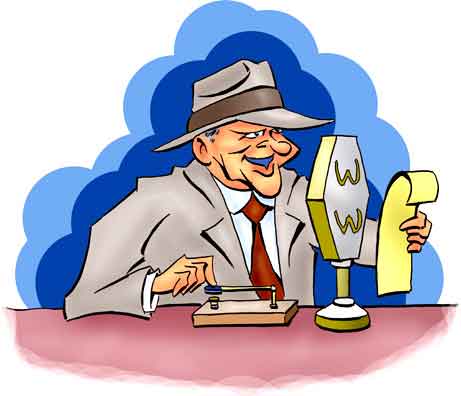
Walter Winchell
George asked for help.
George tried contacting everyone who might help him out. That included California Senator George Murphy and newspaper columnist and radio personality Walter Winchell. George even wrote directly to J. Edgar Hoover - as a last resort he said. Edgar replied that the FBI had no jurisdiction in England and had no say in the actions of their government.
When George spoke to Walter he had complained that the FBI had told Scotland Yard that he, George, was a "dangerous character". Walter, who was a personal friend of Edgar (on a first name basis, in fact), wrote Edgar about George's complaint. He added that he told George neither Edgar nor the #2 FBI man, Clyde Tolson, ever bothered anyone who did not have a criminal record. Edgar again replied that George's difficulties were not in the FBI's jurisdiction.
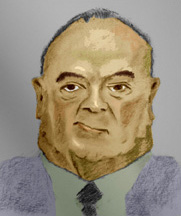
J. Edgar Hoover
He couldn't be of assistance.
George's banishment from England really galled him. It was particularly irritating that the FBI would give information to the English government but wouldn't help him, a US citizen. For their part, the FBI denied they ever contacted England in the matter, and attempts by George to arrange a face-to-face meeting with Edgar were rebuffed. Finally George again wrote Edgar but Edgar was obviously getting tired of the whole matter. He flatly replied that he could not be of any assistance.
It needs be pointed out that George wasn't the only American to get the boot. Virtually all of the transplanted mobsters were also deported. Ultimately all this brouhaha ended up with a new Gaming Act being passed in 1970. The new rules closed many of the loopholes and made it much more difficult to open an English casino. About 90 % of the UK based casinos closed and those that stayed in business were strictly regulated and supervised.
As with much of George's personal life, there are some questions about his relationships. There was a rumor - never verified - that as a teenager he was married to a much older woman. But his only verified marriage was to Grace Mulrooney. Grace and George didn't stay together for long. However, legally they remained married and George supported Grace until she died sometime around 1970. He did, though, have many relationships with other and glamorous women including Betty Grable.
In the last decade of his life, George was not in good health. Although he always insisted he didn't drink, he was a lifelong smoker - as were many of his generation. He developed emphysema and died on November 24, 1980, aged 87, 86, 83, 80, 79, or 77.
Take your pick.
References
The George Raft File, James Robert Parish, Drake, 1973.
George Raft, Lewis Yablonsky, McGraw Hill, 1974.
George Raft: The Films, Everett Asker, McFarland, 2013.
"George Raft", Internet Movie Data Base.
"The George Raft Story", Ray Danton (actor), Allied Artists, 1961, Internet Movie Data Base.
"Some Like It Hot", Jack Lemon (actor), Tony Curtis (actor), Marilyn Monroe (actor), George Raft (actor), Ashton Productions, 1959, Internet Movie Data Base.
"Bolero", Ronald Barron, ITA Journal, Vol. 30, No. 1. Reprinted on "The Trombone Baron" website.
We Only Kill Each Other, Dean Jennings, Prentice Hall, 1967.
"Part Went for Liquor, Part for Women, Rest Spent Foolishly", Quote Investigator.
George Raft: FBI File, Internet Archives.
High Stakes", BBC News, March 20, 2001.